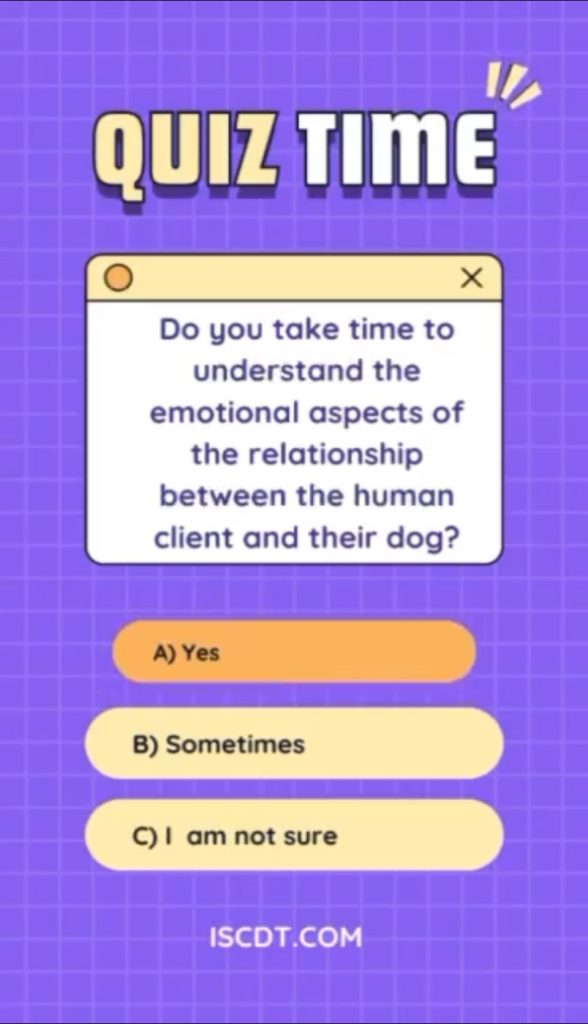Dog training requires empathy. People who seek us out are struggling with their dog. They want to be heard, they want compassion for their situation. Owners are worried about the next fourteen years. Why isn’t their dog behaved like their old dog was or like their best friend’s dog? Sometimes, the dog has one foot out the door and we need to swoop in and help the owner and their dog.
These dog owners need an ally who understands their dilemma and will fix their problem. Are you that trainer? Do you show empathy to your client or do you find yourself talking at them?
Let’s test and find out.

Response
A skilled dog trainer understands the emotional aspects of a client’s relationship with their dog through a combination of observation, communication and empathy. Here are some key ways you may achieve this skill:
During the evaluation the trainer will conduct a thorough interview to understand the client’s background, lifestyle and goals for their dog. This discussion often reveals emotional aspects of the relationship between the client and the dog, such as:
- The client’s attachment to the dog
- Challenges they face and expectations.
In training sessions, the trainer observes interactions between the human client and the dog. This includes:
- How the client communicates with their dog,
- The dog’s body language in response to the owner’s interaction,
- Overall dynamics of their relationship.
These observations provide insight into the emotional bond and any underlying issues.
Educating the client on canine behavior, communication and psychology provides insights into the dog’s perspective and helps the client better understand their dog’s emotions and behaviors. It also fosters a stronger emotional connection.

Response
A good dog trainer listens attentively to the client’s concerns, experiences and feelings about their dog. Listening, rather than being quick to speak, helps the trainer understand the emotional aspects of the relationship, including any anxieties, frustrations or joys the client may be experiencing. We need to know and understand the client’s internal dialogue.
Empathy is crucial in understanding the emotional connection between a client and their dog. A trainer who can empathize with the client’s perspective is better equipped to address their concerns and tailer training methods to suit both the client and the dog.

Response
Tailoring training plans to fit the client’s lifestyle and emotional needs is essential.
There is no such thing as a ‘one size fits all’ approach to dog training. This might involve incorporating activities that make training feasible, more enjoyable and emotionally fulfilling.
A dog trainer’s role often extends beyond the training sessions. Providing ongoing support and follow up allows trainers to assess progress and address any emerging issues or challenges within the client-dog relationship.
Read our blog on patience. We know dog trainers need patience for dog owners and dogs, but what about patience for yourself?

You enjoy spending time with dogs. Trained your own dogs efficiently and now you want to break into the field of dog training. We can help you achieve that goal. Visit iscdt.com to enroll in our 18- lesson, hand’s on dog training program. This course can be completed in the comfort of your own neighborhood, at an affordable price – because no has extra money to spend. A personal, human mentor will guide you through the course.
